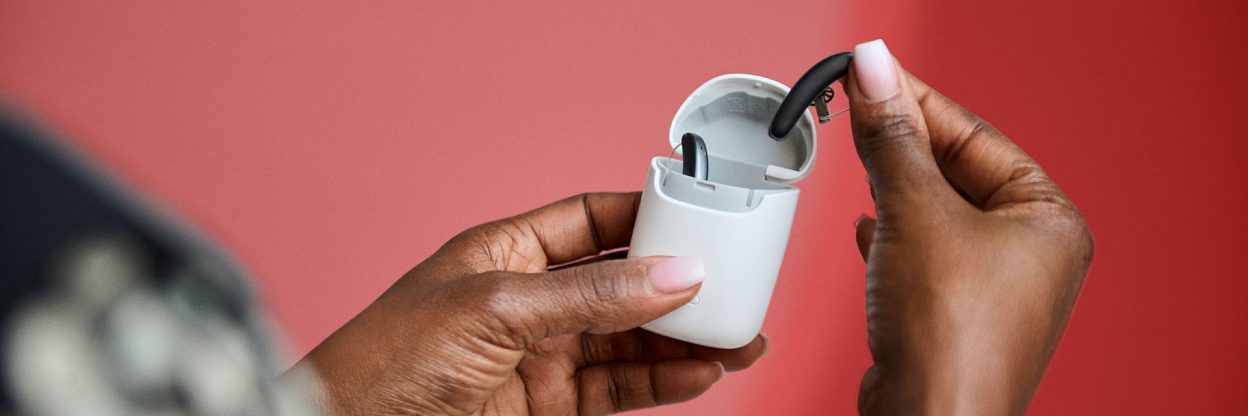
Signia Library


Multi-Stream Architecture for Improved Conversation Performance
Hearing Review, November 03, 2023
Read more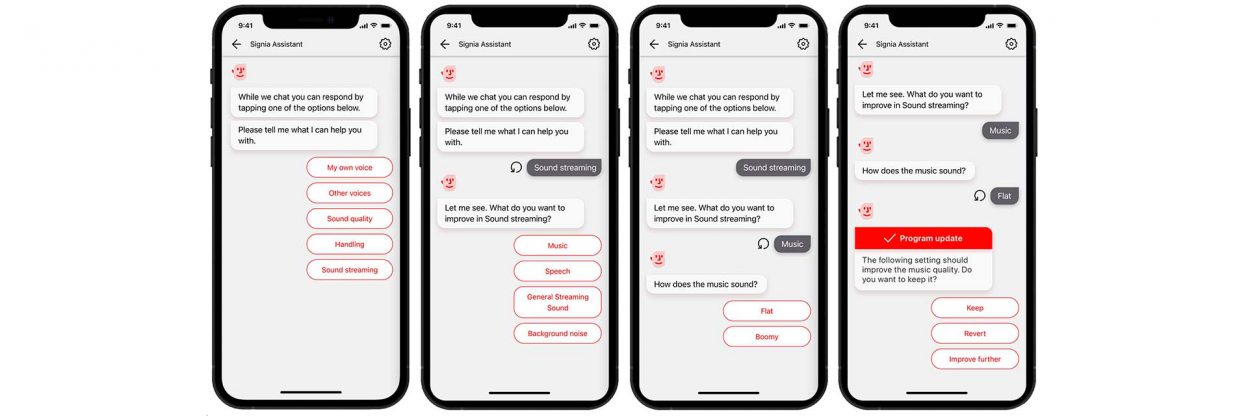
AI-based fine-tuning: How Signia Assistant improves wearer acceptance rates
Audiology Online, April 3, 2023
Read more
HandsFree and CallControl in Signia AX deliver a great phone experience for the wearer and the conversation partner.
Hearing Review, January 12, 2023
Read more
AI Assistant Improves Both Wearer Outcomes and Clinical Efficiency
To investigate the benefits of an AI assistant to support the individualization of hearing aid fittings, 58 hearing aid wearers were surveyed. The results showed Signia Assistant is perceived as easy to use and improves the fitting for individual wearers in difficult listening situations. Further, it increases the clinician’s ability to optimize the fitting more accurately to the individual and strengthens the provider-wearer relationship.
The Hearing Review, Nov 1 2021
Read more
Motion Sensors in Automatic Steering of Hearing Aids
The combination of acoustic and motion sensors provides the hearing aids with data to better optimize the hearing aid features in anticipation of the hearing aid user's listening needs.
Seminars in Hearing, September 24, 2021
Read more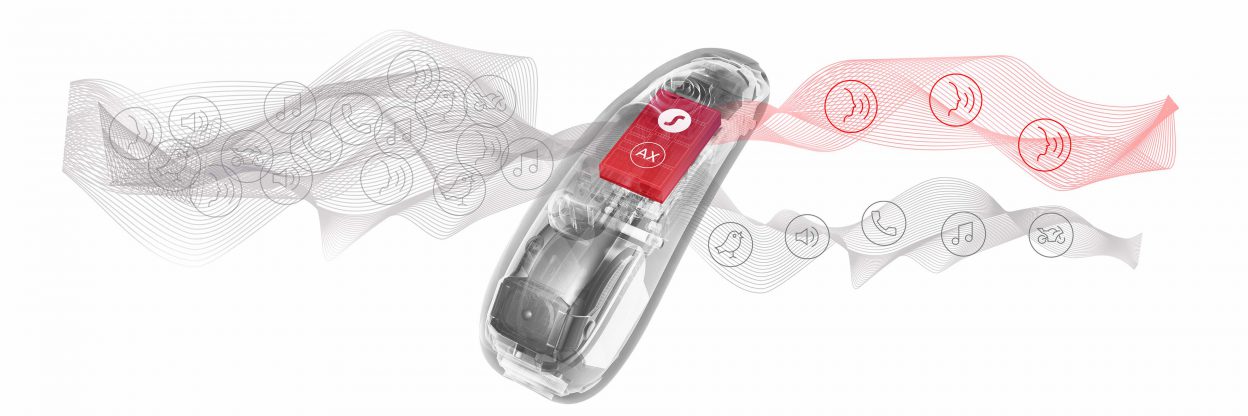
Enhancing Real-World Listening and Quality of Life with New Split-Processing Technology
Signia has a long track record of developing innovative amplification features that optimize wearer performance in all types of challenging listening situations. The goal of optimizing wearer performance across a range of divergent listening conditions was the main driver in the development of the Signia Augmented Xperience (AX) platform with the revolutionary Augmented Focus™ technology.
Audiology Online, September 1, 2021
Read more
Improving communication with face masks
The use of masks and increased distancing while talking because of the coronavirus pandemic is a unique challenge that can be very frustrating even for people with normal hearing. But for the hard of hearing it can prove especially difficult. Signia offers flexible solutions for you as a Hearing Care Professional (HCP) to optimize speech intelligibility in this “new normal” world. This new audiology bulletin explains the adverse effects of masks and social distancing on speech understanding and how HCPs can improve their clients’ hearing experience with the right advice and program settings in Connexx.
Read more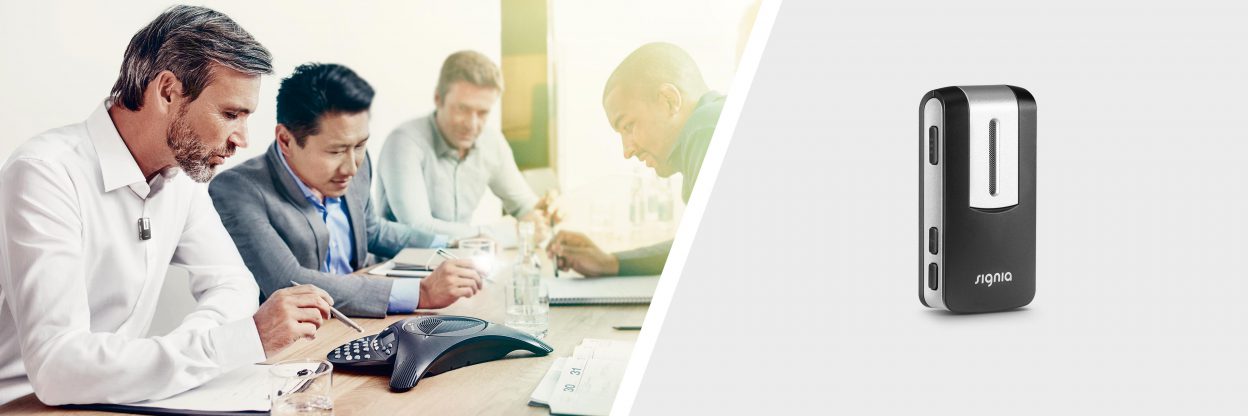
StreamLine Mic
The StreamLine Mic from Signia is a versatile Bluetooth streaming device and remote microphone all in one. Its Bluetooth functionality allows it to pair to multiple Bluetooth enabled devices including Android and iOS (Apple) devices. And the remote microphone capabilities help make even though most difficult listening situations easier to manage. This white paper examines advantages and the performance of the StreamLine Mic
Read moreDynamic Soundscape Processing: Research Supporting Patient Benefit
Signia Xperience takes the next step in designing hearing aid technology that “thinks” the way the listener thinks, and automatically adjusts processing accordingly. Study data reveal significantly better speech understanding for speech from the sides, both when stationary and when moving. Speech-in-noise recognition research shows that the new Dynamic Soundscape Processing does not reduce the effectiveness of Narrow Directionality for speech coming from the front. And finally, real-world data reveal highly satisfactory environmental awareness, and higher overall user satisfaction ratings than have been obtained in published large-scale surveys.
Audiology Online
Read moreDynamic Soundscape Processing Slider
YourSound technology is a comprehensive steering system that was introduced with the Xperience platform, designed to optimize aided performance in any listening situation for the individual user. Connexx offers access to the system in order to allow further individualization when needed. This How-To provides guidance on the exact procedure.
Read more
Maintaining Narrow Directionality While Improving Soundscape Processing
Since its introduction with the binax platform in 2014, Signia’s Narrow Directionality has been the industry leader in optimizing speech understanding in background noise. The purpose of the current research was to ensure that the Narrow Directionality feature of the Xperience was equal to that of the Nx model—previous research has shown that the speech-in-noise processing of the Nx is superior to that of premier models from competitive manufacturers. Indeed, the results of this research revealed that there was no difference in the speech recognition findings for the two different instruments. This allows us to reasonably assume that Xperience also is superior to the competition for these important listening conditions. For those who were questioning if it is possible to obtain excellent soundscape processing for speech, while still maintaining a high level of narrow directionality, the answer is yes.
Canadian Audiologist, VOL. 6 • ISSUE 6 • 2019
Read more
YourSound Technology and Dynamic Soundscape Processing
Signia Xperience devices take a significant step towards adapting to the listening intent of the wearer. YourSound technology is the realization of this comprehensive approach, consisting of the sensory analysis layer provided by Acoustic-Motion Sensors, the processing of environmental sounds in the Dynamic Soundscape Processing, and the Own Voice Processing to process the microphone input as soon as the system detects that the wearer is speaking. This article provides insights into the different components of YourSound technology.
Read more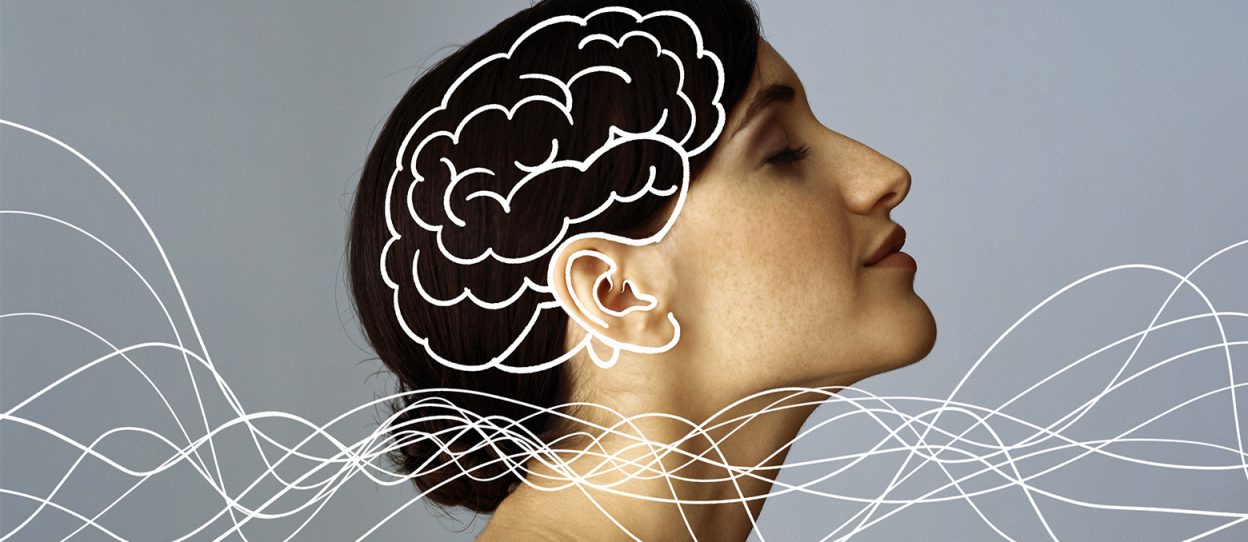
Research Evidence for Dynamic Soundscape Processing Benefits
It is important that the design of hearing aid processing closely resembles the listening intent of the user. This has been enhanced with the Signia Xperience, which utilizes new acoustic and motion sensors, serving to improve speech understanding and the acoustic sound scape. Laboratory data shows significantly better speech understanding for speech from the sides, both when stationary and when moving. Real-world studies using EMA methodology revealed highly satisfactory environmental awareness, and higher overall user satisfaction ratings than have been obtained for either EuroTrak, or the recent MarkeTrak10. Overall, for both efficacy and effectiveness, the performance of the Signia Xperience hearing aids was validated, and increased patient benefit and satisfaction is expected to follow.
The Hearing Review, November 7, 2019
Read more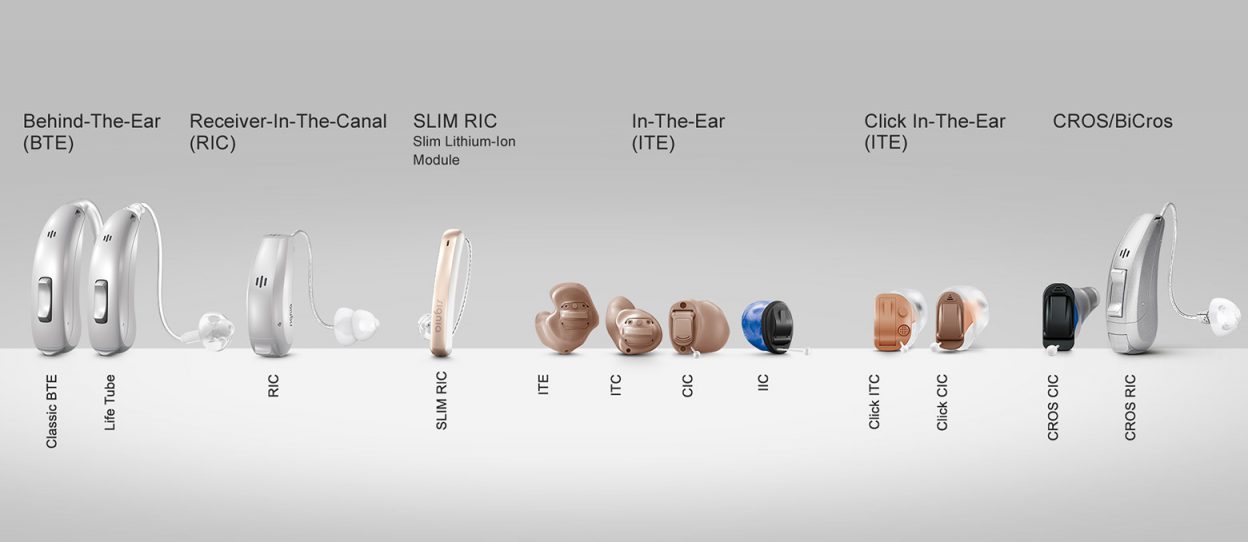
Industry Research: Clinical Comparison of Premier Hearing Aids
Premier hearing aid products from three leading manufacturers were placed in head-to-head competition to assess key benefits for the wearer. For the speech recognition measures, the Signia product was significantly superior, and this was true for three different background noise conditions. Subjective judgements for different attributes of the listening experience were equal for the three products, suggesting that superior speech understanding can be achieved without causing negative effects regarding the acoustic environment.
VOL. 6 • ISSUE 4 • 2019
Read moreClosing the Open Fitting: An Effective Method to Optimize Speech Understanding
The findings of this research clearly show that the coupling system chosen by the HCP can have a substantial effect on subsequent speech understanding in background noise for the patient. The mean additional signal-to-noise ratio (SNR) benefit for a closed fitting was 3 dB, which corresponds to an impressive improvement in speech understanding of approximately 50%. This constitutes a significant advantage for the patient’s daily life in terms of social interaction. This benefit should not easily be foregone, especially in light of the clinically proven high acceptance of closed fittings based on the patient’s improved perception of his or her own voice as a result of Signia Own Voice Processing.
The Hearing Review, March 21, 2019
Read more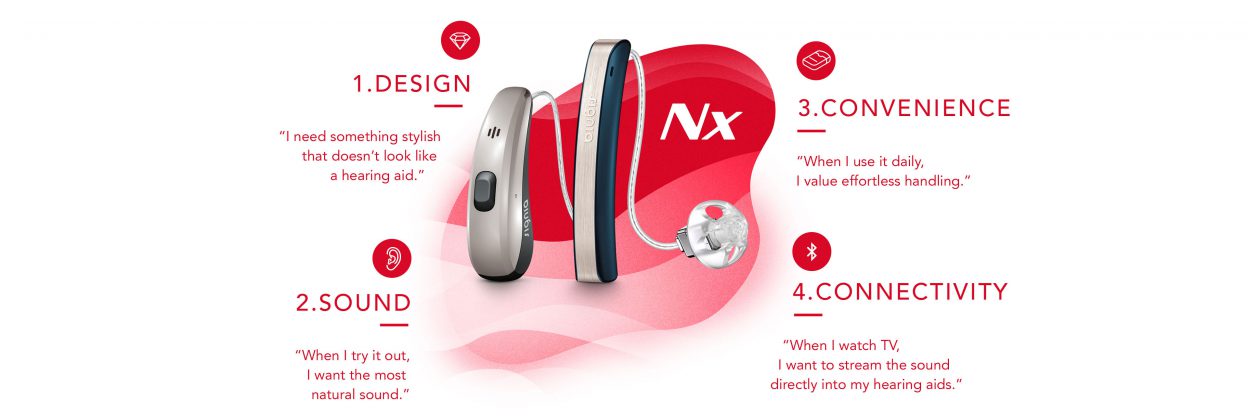
Comparison of streamed audio signal quality: what matters in the real world
Few manufacturers offer technology that incorporates both bilateral full-audio sharing of signals as well as direct streaming from a mobile device. In a comparative research project, the effectiveness of the streaming for such hearing aids was evaluated. The findings reveal a crucial difference between streaming indoors and outdoors, which is important to consider when counseling patients. Results show a substantial streaming advantage for the Signia product, and indicate that a Bluetooth based wireless approach as applied by the competitor brand does not deliver on all basic user needs.
Read more
How to Set Up an AmpCROS Fitting Using Signia Hearing Aids
In an AmpCROS or TriCROS set-up, the aid on the poorer hearing side picks up the sound, amplifies it, and delivers it to both ears. The aid on the better hearing ear receives an amplified signal from the contralateral side and combines it with the ipsilateral signal. This short guide shows you how to use Signia NxTM instruments for an AmpCROS fitting.
Read more
Signia Nx Proven Benefits
Our goal at Signia has always been to allow our patients to live their lives to the fullest despite hearing loss. Therefore, we develop hearing solutions designed to ease and facilitate communication in a variety of listening situations. This paper describes several of our advanced features on the Nx platform and corresponding studies that demonstrate clinically proven benefit to patients.
Read more
Novel Benefits in CROS and BiCROS Hearing Aid Fitting Technology
This Hearing Review article presents a study which demonstrates that the two new CROS/BiCROS systems from Signia—Pure 312 Nx CROS with Narrow directionality and Silk Nx CROS—provide a superior solution to the daily listening problems encountered by people with single-sided deafness (SSD).
Hearing Review
Read more
Signia: Pioneers in Machine Learning Hearing Aids
It’s debatable whether a computer will ever “think” in the same way that the human brain does, but machines’ abilities to see, understand, and interact are changing our lives. It is no surprise then, that in the past few years we have seen mention of machine learning in hearing aid trade journal articles. But are machine learning hearing aids really something new?
Read more
Software-Based Hearing Profile Improves Hearing Aid Fitting Process
In a real-world field study, the Hearing Profile was shown to be a valuable tool for hearing care professionals, not only by providing an individualized first fit with an appropriate target prescription, but also a means to leverage the cooperation between professionals and patients which results in improved fitting success.
AudiologyOnline
Read more
Validity, Reliability, and Efficiency of the Signia AutoFit Procedure
This clinical study shows that AutoFit is both valid and reliable, and can be an efficient and useful tool in the verification of the hearing aid fitting via the new IMC2 standard.
Hearing Review
Read more
Better Speech Understanding with Signia Nx CROS/BiCROS Instruments
Patients with SSD often experience significant problems with speech understanding in daily listening situations where noise is a factor. The results of this study demonstrate that the two latest CROS/BiCROS solutions offered by Signia, the Pure 312 Nx CROS with Narrow Directionality and the Silk Nx CROS, provide clear and significant speech intelligibility benefits for users in challenging listening environments.
Read more
How to use AutoFit (IMC2)
AutoFit™ is a beneficial feature in the Connexx™ Fitting Application that automatically provides the Hearing Care Professional (HCP) with an optimized real-ear insertion gain (REIG) setting without the need for the HCP to manually match targets. This paper describes how to perform quick match-to-target fittings using AutoFit from Connexx Version 8.5 onwards.
Read more
Own Voice Processing Has People Talking More
OVP improves the perception of the the wearer's own voice, but did you know that a recent study shows that it also has wearers participating more in communication settings?
Hearing Review
Read more
3D Classifier
At first glance, a tiny hearing aid and a self-driving car don’t have much in common. However, on a technological level there are a couple of similarities: self driving cars use a variety of sensors to collect real-time information about the environment such as GPS, optical cameras, specialised radar, and accelerometers.
Read more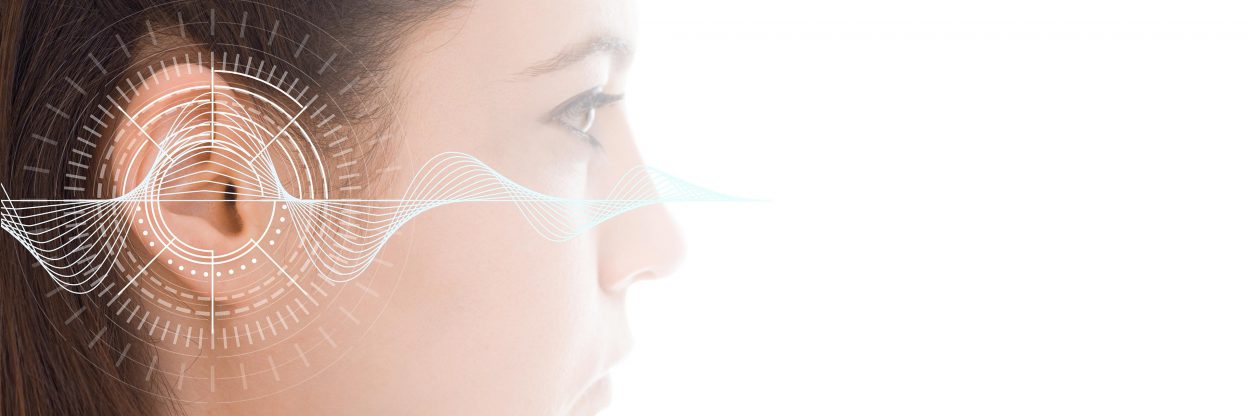
The Trouble with Open
We have been taught that the occlusion effect often is the culprit in own voice issues, so why is it that with the prevalence of open fittings, patient dissatisfaction with the sound of their own voice is still an obstacle to hearing aid acceptance?
Read more
A Comparison of Feedback Cancellation Systems in Premier Hearing Aids
This Hearing Review publication reports on a study which uses three tests to evaluate the various aspects of hearing aid performance directly affected by the FBC: Aided Gain Before Feedback, Max-REIG, and a sound quality evaluation using Multi-Stimulus Test with Hidden Reference and Anchor (MUSHRA). Considering all potential trade-offs, the Signia FBC can be considered a best-in-class algorithm in this multifaceted benchmark analysis.
Hearing Review
Read more
Perception of Own Voice Wearing Hearing Aids: Why "Natural" is the New Normal
A study conducted at the University of Northern Colorado shows that OVP is appropriate for both open and closed fittings, and for different fitting rationales.
AudiologyOnline
Read more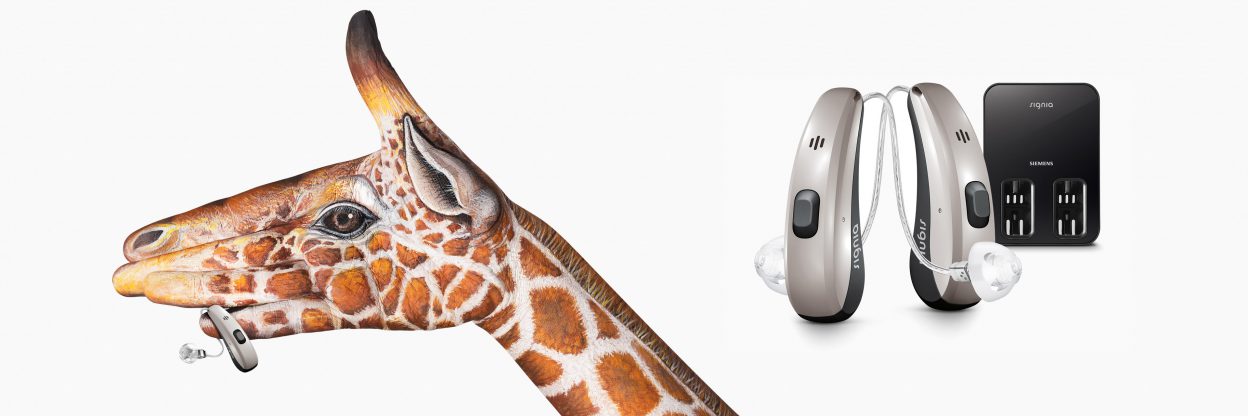
The art of designing Pure Charge&Go Nx
Connectivity is undoubtedly one of the most im-portant topics in the hearing aid industry today. While most people immediately associate the word connectivity with being able to link their hearing aids with electronic devices such as smartphones, in a genuinely patient-centric hearing system the ap-plication of connectivity encompasses more than simply connecting to personal electronic devices.
Read more
Sound Quality as the Key to User Acceptance
This AudiologyOnline article describes Nx improvements in sound quality.
AudiologyOnline.com
Read more
A New Own Voice Processing System for Optimizing Communication
This Hearing Review publication describes how Own Voice Processing works and details study results validating its effectiveness.
Hearing Review
Read more
How to Use Own Voice Processing in Connexx 8
Signia Nx hearing aids solve the own voice issue with a sophisticated technological solution—a real-time detection of the wearer’s voice, combined with dedicated Own Voice Processing (OVP). To use OVP, the patient must perform a short customization procedure during the initial hearing aid fitting. Here is how to do it.
Read more
Signia Nx Sound Quality & Own Voice Processing
A high level of sound quality is vital for new hearing aid wearers who have to adapt to hearing the world via an electronic device. This is especially important for the sound quality of the wearer’s own voice. Hearing care professionals often resolve own voice complaints by reducing amplification, with the unintended consequence of decreased speech intelligibility. With the new Signia Nx, this is no longer an issue—because of the revolutionary technology called Own Voice Processing (OVP).
Read more
Comparison of Music Sound Quality Between Hearing Aids and Music Programs
While hearing aid users often wear their hearing aids for music listening, they are frequently dissatisfied with the sound quality of music. This AudiologyOnline article details a study which describes music sound quality ratings between the universal and music programs of five premier market hearing aids, and which hearing aid achieves the best overall sound quality ratings.
AudiologyOnline, August 2017
Read more
Clinical Study Shows Significant Benefit of Own Voice Processing
This Hearing Review publication reports that Signia OVP provides a substantial improvement in own-voice satisfaction, and that this improvement is present for different fitting strategies, and for different ear-canal couplings.
Hearing Review
Read more
Moving Beyond the Audiogram Towards a Patient-Centered, Interactive First Fit
It has long been known that pure tone audiogram (PTA) measurements cannot fully account for the variation in speech intelligibility scores measured from hearing impaired listeners. With regard to hearing aid fittings, it is clear that there is no simple solution that would allow us to perform a consistently perfect customized fitting by even adding one additional variable to audiogram data. A transition from the “average” patient fitting towards a more individual fitting requires several stages. In this paper, these stages are described and explained, based on data obtained from several clinical studies.
AudiologyOnline
Read more
Signia Rated Superior to Competing Products for Music Sound Quality
Listening to music is important for most hearing aid users, and, having a high quality signal is essential. Using the MUSHRA methodology, samples of music were rated for the premier instrument from four leading manufacturers. Data analysis revealed significantly higher ratings for Signia primax for both the universal program and for the music program. The superiority was present regardless of music genre, or whether the music sample was familiar or unfamiliar.
Read moreComparison Study of Speech Recognition Using Binaural Beamforming Narrow Directionality
This article examines the advantages provided by the Signia primax Narrow Directionality processing for speech understanding in background noise in four studies: Comparisons of the primax system to previous research with the binax platform, SNR benefits related to average speech understanding, and comparisons to a competitive product using Signia adaptive directional and narrow directionality processing.
The Hearing Review, May 2017
Read morePure 13 BT, motion detection and myControl App - The next step in connectivity
Taking advantage of the powerful computers we carry around in our purses and pockets – our smartphones – hearing instruments have just reached a new level of precision. By adding information from the motion sensors in our smartphones through Bluetooth (BT), Signia Pure 13 BT can detect the wearer’s listening situation in a much more sophisticated way.
Read moreThe Connected Ear
“Connectivity” is a word that is used a lot in today’s society, and for good reason. Whether we are connecting with friends and acquaintances on Facebook, using our smartphones to connect to media and news websites, or checking the weather, the theme of connectivity plays a big part in most people’s lives.
Read moreMotion Detection. A System for the Listener on the Move.
Pure 13 BT is the first solution that marries the until-now separate worlds of hearing instruments and advanced smartphone technology to improve signal-processing. With the new myControl app from Signia, the hearing aids can access information from the wearer’s smartphone, enabling them to detect the acoustic environment and anticipate the listener’s intent and preferences more precisely than ever before. The hearing aids cannot know for certain what the wearer wants to hear, but with the movement information, they can predict it with better accuracy. In addition, the user can control their instruments, monitor their acoustic environment and, of course, stream directly from their iPhone or iPad.
Read moreUsing a De-reverberation Program to Improve Speech Intelligibility and Reduce Perceived Listening Effort
Study shows that adding a dereverberation program found in the Signia Primax RIC, improved speech intelligibility and reduced listening effort in the majority of the listeners tested using simulated reverberation.
Read moreMulti-center Evidence of Reduced Listening Effort Using New Hearing Aid Technology
A review of clinical studies from three leading hearing aid research centers show a consistent trend for the Signia primax features to significantly reduce listening effort. Moreover, research from one site revealed that speech recognition performance for hearing-impaired listeners (pure-tone average 35-60 dB) using the primax Narrow Directionality algorithm was equal to that of normal-hearing individuals for the same speech-in-noise task.
Hearing Review, February 14, 2017
Read more
Getting Started with OVP Video
This video describes the easy Own Voice Processing (OVP™) activation procedure for your patient.
Read moreMotion SP: The New Super Power
Although only a small percentage of our patients suffer from severe to profound hearing loss, designing the ideal hearing solution for them brings unique challenges. With their particular listening needs in mind, Signia has offered generations of hearing solutions with increasingly sophisticated technology.
Read moreSignia outperforms competition in new speech intelligibility study
Over decades of research, directional beamforming technology has unequivocally shown improved speech intelligibility in challenging listening environments. Signia hearing instruments, which employ audiostreaming between the two hearing aids, have the advantage of combining four microphones in to a unified system, which delivers superior directional performance, as shown in this study.
Read moreListening Effort, Speech Intelligibility, and Narrow Directionality
Dr. Veronika Littmann at Signia R&D, together with Dr. Harvey Dillon and his research team at NAL recently published an article on Narrow Directionality in The Hearing Review. The article reports on a study which showed that Narrow Directionality provided a significant listening advantage in a laboratory experiment comprising a frontal target speech in diffuse speech babble. For this experiment, participants with moderate hearing loss matched the intelligibility performance of a group of age-matched near-normal hearers. The range of effort incurred in listening for the hearing-impaired participants also matched that of the age-matched, near-normal hearing group.
The Hearing Review, January 2017
Read more
OVP Study Results Video
This video highlights the results of two clinical studies conducted with Signia's Own Voice Processing (OVP™) technology.
Read moreCellion primax: The New Benchmark in Rechargeable Hearing Aid Technology
Signia’s Cellion primaxTM is the world’s first RIC hearing instrument featuring lithium ion rechargeable batteries, together combined with a new small wireless charger. This innovative hearing system meets patient expectations for battery usability and reliability– today and also in the future. This paper details the patient benefits and the technical advantages of this innovation.
Read moreOptimising hearing aid processing for music appreciation
Hearing aid manufacturers’ main focus has, up until recently, been improvement of speech intelligibility. Today’s hearing aid users have much broader demands however and often cite improved music perception as a key outcome or goal. Drs Tish Ramirez and Rebecca Herbig from Signia outline the changes in technology that hearing aid manufacturers are implementing to try to address this need.
Published in ENT and Audiology News, September/October 2016, vol. 25 no. 4. ©Pinpoint Scotland Ltd. All rights reserved.
Read moreReducing Reverberation with EchoShield: Clinical Outcomes
Improved understanding of speech in background noise is a common desire of hearing aid wearers, and a design goal of hearing aid manufacturers. Over the years, technology has been developed to specifically address this concern. Noise reduction algorithms contribute significantly to sound quality and reduced listening effort; directional microphone technology can substantially improve the signal-to-noise ratio (SNR) at the ear of the listener.
Read moreA Comparison of Prescriptive Fitting Algorithms and Beamforming Technology for Two Different Manufacturers
Published in Canadian Audiologist – vol. 3, issue 3, 2016
Read moreObjective Measurement of Listening Effort
Listening Effort is the mental exertion listeners experience trying to solve an auditory task such as understanding speech (or detecting a target among interferers). Because listening effort is influenced by the clarity of the signal, it is therefore affected by hearing loss, as well as signal degradation caused by background noise or bad sound quality.
Read moreSPEECH
The SPEECH is the core of primax. This is the engine responsible for the automation of the Universal program, and it is clinically proven to reduce listening effort for the wearer throughout the day*. More than a single feature or innovation, SPEECH steers a conglomerate of algorithms and processes which work in concert to achieve the goal: less listening effort.
Read moreEchoShield
Reverberation is the persistence of sound caused by sound waves reflected from surfaces. When the room is large or reflective enough, the reverberation mixes with the original speech source and degrades the signal quality. The EchoShield program reduces the effects of reverberation so that the sounds are clear and crisp again, reducing listening effort for the wearer.*
Read moreWireless CROS & BiCROS
The primax wireless CROS solution is designed for people who have normal hearing in one ear and unaidable hearing loss in the other. Sounds from the unaidable side are received by the microphones of a CROS Pure transmitter device, processed, and wirelessly transmitted to the side with normal hearing.
Read moreA New Wireless CROS and BiCROS Solution
While the majority of individuals with hearing impairment have hearing loss in both ears, 10% or so of this population have a unilateral condition. Of this group, for many, the impaired ear is unaidable, and this condition often is referred to as single-sided deafness.
Canadian Audiologist - vol. 3, issue 4, 2016
Read moreTwinPhone
While we recommend easyTek as the ideal solution for use with Bluetooth phones, TwinPhone is the perfect solution for people who typically use the same nonBluetooth phones at home or at work. TwinPhone allows the wearer to hear the phone conversation in both ears without easyTek.
Read moreHD Music
As a major improvement upon the binax music program, an industry benchmark, primax offers three dedicated music programs. These dedicated music programs are uniquely designed to enrich the sound quality of music and to maximize the enjoyment of music, whether the wearer is listening to recorded music, attending a live concert, or making music himself.
Read moreListening effort
Depending on the acoustic situation and the context, listening can require more or less attentional and cognitive processing. This dynamic activity of the brain which accompanies and enables listening is ongoing and cumulative. And it happens regardless of how much of the speech is actually understood.
Read moreReducing Listening Effort via primax Hearing Technology
The primary goal of amplification is improving speech understanding. When listening situations become noisier or more challenging, this is even more important. However, beyond improving speech intelligibility, another indicator of the effectiveness of hearing aid fittings that has sometimes been overlooked is the cognitive demands, or listening effort required for speech understanding to take place. This is why it is important to not only improve speech understanding, but also make speech understanding easy. This is the underlying goal of the new Signia primax™ platform ― to improve speech intelligibility and reduce listening effort for the wearer.
AudiologyOnline, June 9, 2016
Read moreBenefits of Binaural Beamforming for Individuals with Severe Hearing Loss
The Hearing Review 2016/04
Read moreClinical Studies Show Advanced Hearing Aid Technology Reduces Listening Effort
The Hearing Review 2016/03
Read moreMusic Lovers and Hearing Aids
Some people cannot imagine life without music - it relaxes, inspires, and for many, completes their lives. Music has a different meaning for each person, and there are individual preferences, but most would agree that music listening should be enjoyable. This seemingly simple task easily can be undermined when hearing loss is present, as listening to just a limited part of the dynamics, or a reduced frequency range of our favorite music could significantly reduce the enjoyment of the experience.
AudiologyOnline, February 26, 2016
Read moreImproving Speech Recognition in Noise Using Binaural Beamforming in ITC and CIC Hearing Aids
The Hearing Review, November 24, 2015
Read moreBinaural Beamforming and Directionality: Siemens Technology Holds Clear Performance Advantage
Canadian Audiologist – vol. 2, issue 4, 2015
Read moreMeasuring Directionality of Modern Hearing Aids
Canadian Audiologist – vol. 2, issue 3, 2015
Read moreNew Wireless, Binaural Processing Reduces Problems Associated with Wind Noise in Hearing Aids
AudiologyOnline, October 12, 2015
Read moreImproving Cell Phone Listening With Hearing Aids: A New Adaptive Streaming Volume Algorithm
AudiologyOnline, June 7, 2015
Read moreDirectionality Assessment of Adaptive Binaural Beamforming with Noise Suppression in Hearing Aids
In this work we present a new method for assessment of directionality in modern hearing aids, which has the benefit of simulating both a target source and an interfering source at the same time using speech signals. We show the benefits and the limitations of the method and present measurements for different microphone modes of different manufacturers. Furthermore, a sequential index based on these measurements is introduced.
Read moreFeature in Brief: Binaural OneMic Directionality
As another world's first, binaural OneMic directionality allows even single-microphone hearing aid wearers to experience the benefits of automatic directionality.
Read moreFeature in Brief: binax Spatial Configurator
Spatial Configurator is the easy user control by which the experienced wearer can steer his hearing instruments in ambiguous situations according to his listening preferences.
Read moreFeature in Brief: binax eWindScreen binaural
Taking advantage of High Definition Sound Resolution, eWindScreen binaural in binax hearing instruments reduces the annoying effects of wind.
Read moreFeature in Brief: binax Spatial SpeechFocus
Inspired by how the brain localizes sound, Spatial SpeechFocus is a binaural feature enabled by the High Definition Sound Resolution offered by the binax platform. Spatial SpeechFocus offers true directionality to the front, back, or either side depending on where speech originates.
Read moreFeature in Brief: binax Narrow Directionality
A world-first, Narrow Directionality is the first directional microphone technology proven to allow hearing impaired wearers to hear speech better in cocktailparty like situations than even those with normal hearing.*
Read more